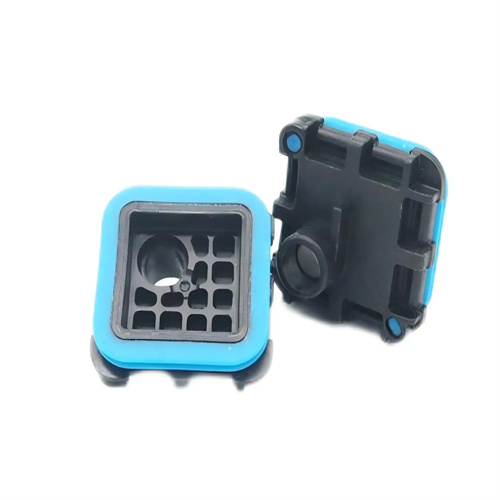Injection Molding Light Spot (Ghosting) and Solutions
Injection molding flare, also known as ghosting, is an irregular pattern of light or dark spots that appear on the surface of a plastic part. It is particularly noticeable on black or dark-colored parts, severely impacting the product’s appearance. This defect primarily stems from variations in the melt’s flow path within the mold cavity. As the melt flows through the gate, runner corners, or areas of sudden changes in wall thickness, uneven flow velocity and temperature distribution create localized orientation differences. Upon cooling, the resulting optical effect differs from that of the surrounding area. In the production of automotive door handles, radial flare often appears near the gate when using POM material for injection molding. Consequently, one high-end model raised its appearance inspection standard from level 1.5 to level 0, resulting in an initial pass rate of only 65%, placing significant pressure on production.

Improper mold gate design is a common cause of light spots. The gate size and position will directly affect the flow state of the melt. When the gate is too small or too far away from the sudden change in wall thickness, the melt will produce a jetting phenomenon when entering the cavity. The high-speed flowing melt will quickly cool down after contacting the cavity wall, forming a surface hardened layer. The subsequent melt pushes the hardened layer forward, forming a corrugated light spot on the surface. Taking the air conditioner remote control housing as an example, the original design used a single-point side gate with a diameter of 1.2mm, which resulted in a significant light spot in the button area. By expanding the gate diameter to 1.8mm and changing to a latent gate close to the center of the wall thickness, the melt flow is smoother, the area of the light spot area is reduced by 80%, and the appearance qualification rate is increased to 92%.

Precise control of process parameters is crucial to eliminating light spots, and the matching of melt temperature and mold temperature is particularly critical. For amorphous plastics such as ABS, too low a melt temperature will lead to insufficient fluidity, forming a laminar flow in the mold cavity, and producing stratified light spots after cooling; while too high a temperature may cause material degradation, which will also form discolored spots on the surface. In the production process of a refrigerator drawer, an orthogonal test found that when the melt temperature was controlled at 230±5℃ and the mold temperature was maintained at 65±2℃, the frequency of light spots was lowest. At the same time, the injection speed was adjusted to segmented control, and the speed was reduced by 15% when the melt filled the mold cavity to 70% to avoid turbulence, reducing the light spot defect rate from 18% to 3%.

The cavity surface quality and the use of mold release agents can also affect the formation of light spots. When the cavity surface roughness (Ra) is too high, irregular flow paths will form during melt flow at the microscopic level, resulting in light spots in rough areas after cooling. After 200,000 production cycles, a certain brand of mobile phone casing mold experienced wear on the cavity surface, with the Ra value increasing from 0.08μm to 0.3μm. This increased light spots on the surface. Polishing the cavity restored the Ra value to below 0.1μm, and switching to a silicone-free mold release agent reduced surface contamination, effectively resolving the light spot issue. Additionally, regularly cleaning the cavity surface of oil and residual material to maintain a clean surface can prevent localized light spots caused by foreign matter.

Adjusting material properties and formulas is the fundamental way to solve the light spot problem. For parts with extremely high appearance requirements, specially modified materials can be used. In the production of black home appliance panels, ordinary PP materials contain small amounts of impurities, which easily cause white light spots to appear after injection molding. After switching to a special anti-light spot PP with 0.2% carbon black masterbatch, the uniformity of the material is significantly improved, and the orientation differences during the melt flow process are reduced. At the same time, adding 0.5% flow modifier to the material reduces the melt viscosity and makes the flow smoother, and the probability of light spots appears is reduced from 22% to 4%. It is important to note that material changes need to be accompanied by adjustments to process parameters, such as appropriately reducing injection pressure to avoid new defects such as flash due to improved fluidity.
